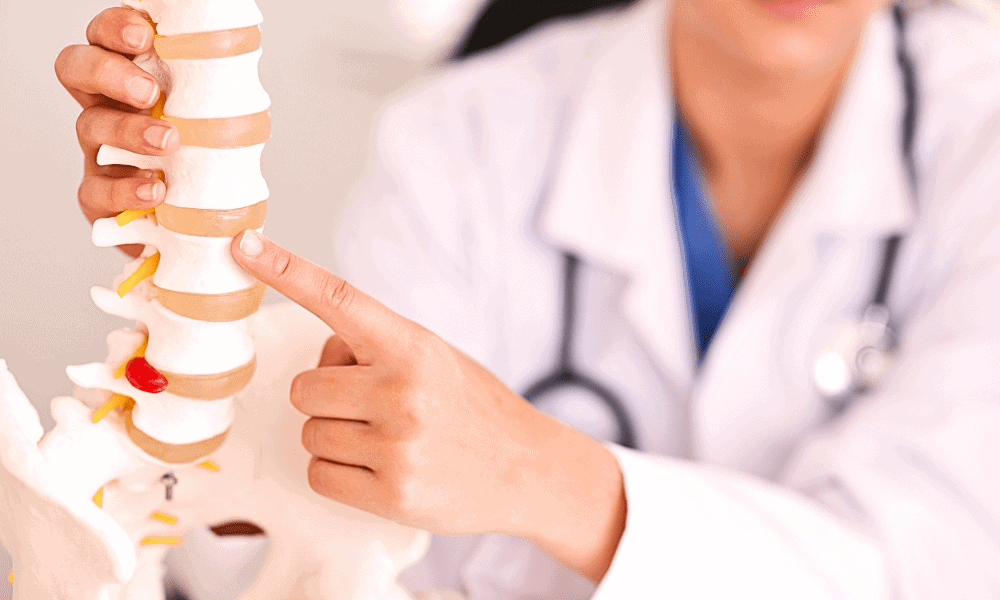Welcome to Performance Pain and Sports Medicine and our comprehensive guide on disc desiccation. In this article, we will explore the definition, causes, symptoms, and treatment options for disc desiccation. We will also discuss preventive measures and lifestyle changes that can help manage this condition effectively.
Follow our Pain Diaries channel on YouTube for more cutting edge bak pain relief information

Definition of Disc Desiccation
Disc desiccation refers to the drying out and degeneration of the intervertebral discs in the spine. These discs act as shock absorbers and provide cushioning between the vertebrae. Over time, the discs can lose their moisture content, leading to decreased flexibility and increased risk of injury.
Causes of Disc Desiccation
There are several factors that can contribute to disc desiccation. These include:
- Age-related degeneration: As we age, the discs naturally lose water content and become less flexible.
- Spinal injuries: Traumatic events such as accidents or falls can damage the discs and accelerate the desiccation process.
- Poor posture and ergonomics: Maintaining improper posture while sitting or standing for extended periods can put excessive strain on the discs.
- Sedentary lifestyle: Lack of regular physical activity weakens the muscles that support the spine, placing additional stress on the discs.
- Smoking: Smoking reduces the blood supply to the discs, impeding their ability to receive nutrients and stay hydrated.
Symptoms and Diagnosis of Disc Desiccation
Disc desiccation may manifest with various symptoms, including:
Back Pain
One of the primary symptoms of disc desiccation is chronic or intermittent back pain. The pain may worsen during physical activity or after long periods of sitting or standing.
Reduced Spinal Mobility
As the discs lose moisture and become less flexible, it can limit the range of motion in the spine. This can result in stiffness and difficulty performing certain movements.
Radiating Pain
In some cases, disc desiccation can lead to radiating pain, also known as radiculopathy. This occurs when the damaged disc compresses a nerve root, causing pain, tingling, or numbness that radiates down the arms or legs.
To diagnose disc desiccation, a healthcare professional may conduct a thorough physical examination and order imaging tests such as X-rays, MRI, or CT scans.
Treatment Options
The treatment for disc desiccation aims to relieve pain, improve spinal mobility, and prevent further damage. The options include:
1. Lifestyle Changes
Making certain lifestyle modifications can have a positive impact on disc health. These may include maintaining proper posture, engaging in regular exercise, avoiding prolonged sitting or standing, and quitting smoking.
2. Physical Therapy
Physical therapy exercises and stretches can help strengthen the muscles supporting the spine and improve flexibility. A skilled physical therapist can develop a personalized treatment plan to address specific needs.
3. Medications
Nonsteroidal anti-inflammatory drugs (NSAIDs), muscle relaxants, and pain relievers may be prescribed to alleviate pain and inflammation associated with disc desiccation.
4. Epidural Steroid Injections
In some cases, corticosteroid injections or epidural steroid injections can provide temporary relief from pain and reduce inflammation around the affected discs.
5. The Discseel® Procedure
Discseel is a cutting edge minimally invasise procedure that uses a proprietary blend of medical-grade adhesive to repair damaged discs in the spine.
6. Surgical Interventions
Surgery is typically considered a last resort when conservative treatments fail to provide relief. Procedures such as discectomy, spinal fusion, or artificial disc replacement may be performed to alleviate pain and stabilize the spine.
Prevention and Management
While disc desiccation may be an unavoidable consequence of aging, there are measures you can take to prevent its progression and manage the symptoms effectively:
1. Exercises and Stretches
Regular exercise, including strength training and low-impact aerobic activities, can help maintain spine health and prevent further degeneration of the discs.
2. Posture Correction
Maintaining proper posture while sitting, standing, and lifting heavy objects can reduce stress on the spine and minimize the risk of disc desiccation.
3. Maintaining a Healthy Weight
Excess weight puts additional strain on the spinal discs. By maintaining a healthy weight through a balanced diet and regular exercise, you can reduce the load on your spine.
Conclusion
Disc desiccation is a common condition characterized by the drying out and degeneration of the intervertebral discs in the spine. While it is often associated with aging, lifestyle factors and injuries can also contribute to its development. By understanding the causes, recognizing the symptoms, and exploring the various treatment options available, individuals with disc desiccation can take proactive steps to manage their condition effectively and improve their quality of life.
FAQs
Q: Can disc desiccation be reversed?
A: While the degeneration caused by disc desiccation cannot be reversed, appropriate treatment and lifestyle changes can help manage the symptoms and prevent further damage.
Q: Is surgery always necessary for disc desiccation?
A: Surgery is usually considered a last resort when conservative treatments fail to provide relief. Most cases of disc desiccation can be managed through non-surgical methods.
Q: Can physical therapy help with disc desiccation?
A: Yes, physical therapy plays a crucial role in managing disc desiccation. It can help improve spinal mobility, strengthen supporting muscles, and alleviate pain.
Q: How long does it take to recover from disc desiccation surgery?
A: Recovery time can vary depending on the type of surgery performed. It may take several weeks to several months for a full recovery.
Q: Are there any exercises to avoid with disc desiccation?
A: While it is essential to consult with a healthcare professional or physical therapist, exercises that involve heavy impact or strain on the spine, such as heavy lifting or high-impact sports, should generally be avoided.
If you have back pain due to a disc desiccation and would like to explore minimally and non-invasive treatment options, we would be happy to arrange a consultation with Dr. Matthias Wiederholz. He is available for the Discseel® Procedure and other minimally invasive procedures in Houston, Texas and Lawrenceville, New Jersey. Dr. Suzanne Manzi is also available for minimally invasive procedures in Houston and League City, Texas. Our team will work with you to create a personalized treatment plan to help you get back to the daily activities you enjoy.

















